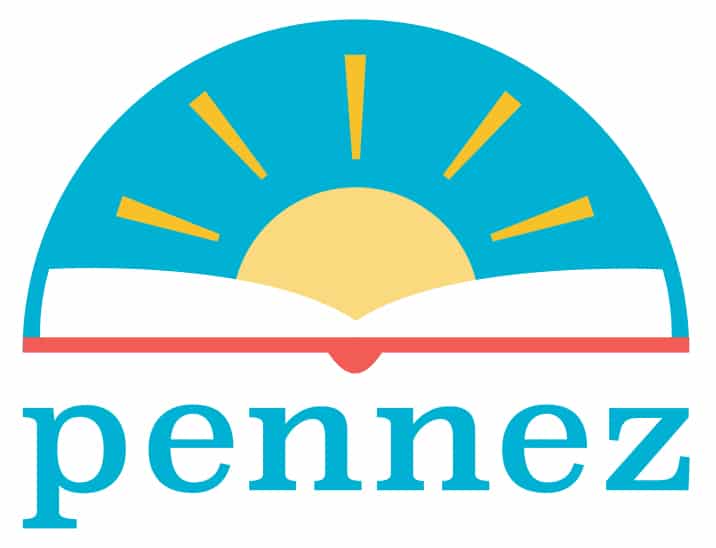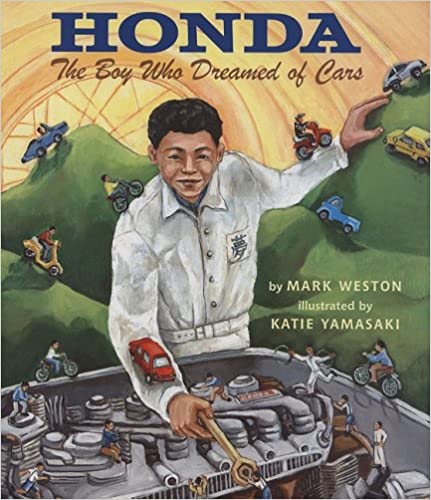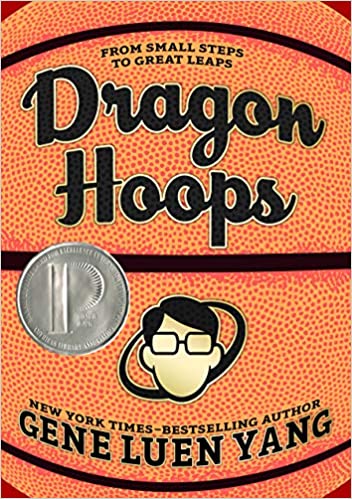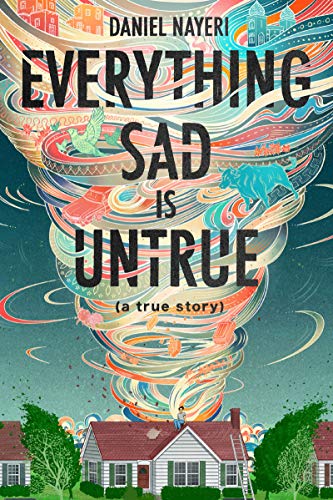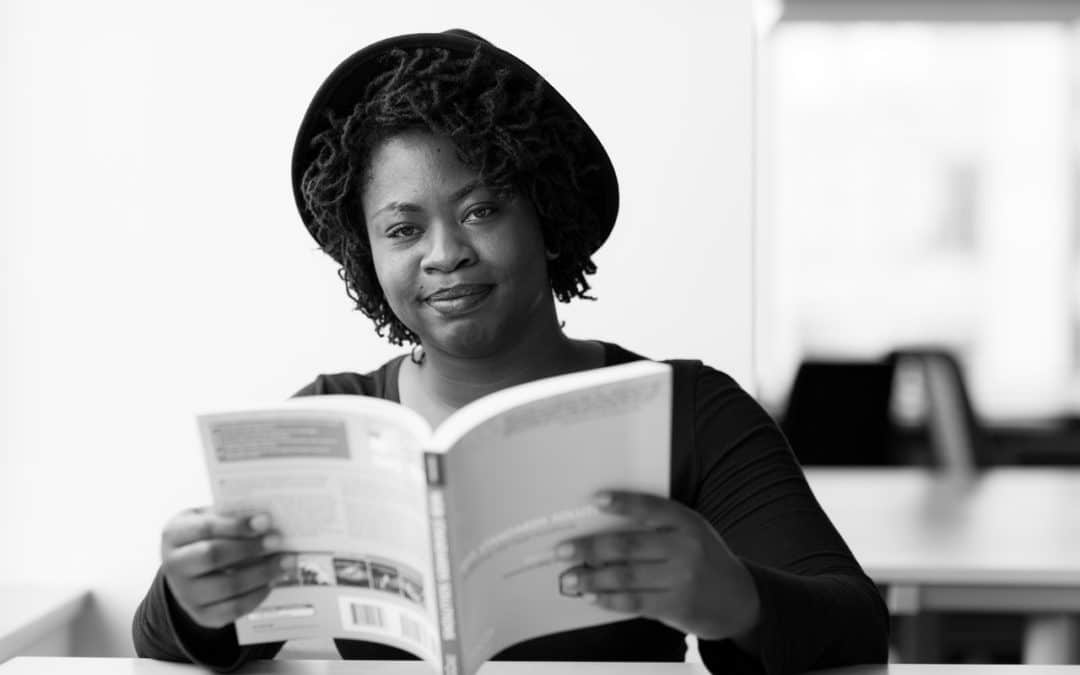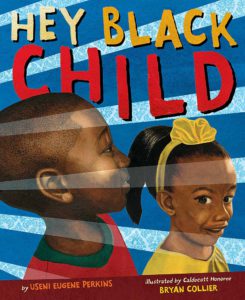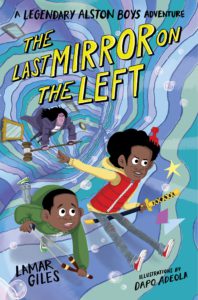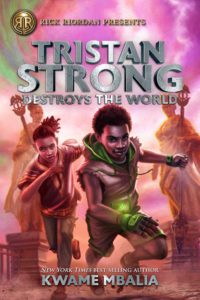
by Rebecca | Feb 13, 2022 | Booklists
Photo by Michael Burrows from Pexels
- YA books with LGBTQ authors.
- Fiction and nonfiction booklist
A booklist with modern-day stories that discuss gender and sexuality for teens and young adults.
8-12, MIDDLE GRADE READERS
NON FICTION
1. The Gender Wheel by Maya Christina Gonzalez
2. You Be You! He Kid’s Guide to Gender, Sexuality, and Family by Jonathan Branfman
3. Be Amazing, A History of Pride by Desmond Is Amazing
4. Rainbow Revolutionaries by Sarah Prager
5. Out! How to Be Your Authentic Self by Miles McKenna
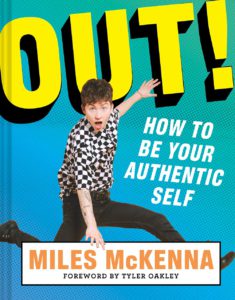
FICTION
1. Ciel in all Directions by Sophie Labelle about a trans Teen
2. Cheer Up! By Crystal Frasier YA Graphic Novel
3. Sports by Emilie Dufresne
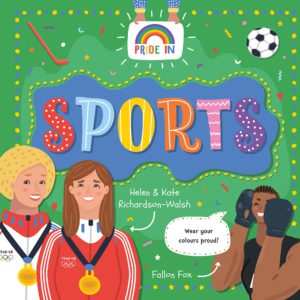
4. Heartstopper by Alice Oseman
5. My Brother’s Husband by Gengoroh Tagame
6. Laura Dean Keeps Breaking Up With Me by Mariko Tamaki
13+, SECONDARY READERS
NON FICTION
1. The ABC’s of LGBT by Ash Hardell
2. Queer, There, and Everywhere, 23 People Who Changed the World by Sarah Prager
3. Out! How to Be your Authentic Self by Miles McKenna
4. Rainbow Revolutions, Power, Pride, and Protest in the Fit for Queer Rights by Jamie Lawson
5. A Quick & Easy Guide to Queer & Trans Identities by Mady G and Jules Zuckerberg
6. The New Queer Conscience by Adam Eli
7. All Boys Aren’t Blue by George M. Johnson
FICTION
1. The Lost Coast by A.r. Capetta
2. Our Dining Table by Mita Ori a Graphic Novel
3. When You get the Chance by Tom Ryan
4. You Brought Me the Ocean by Alex Sanchez
5. Our Dining Table by Mita Ori
6. When you Get the Chance by Tom Ryan
7. The Lost Coast by A.R. Capetta
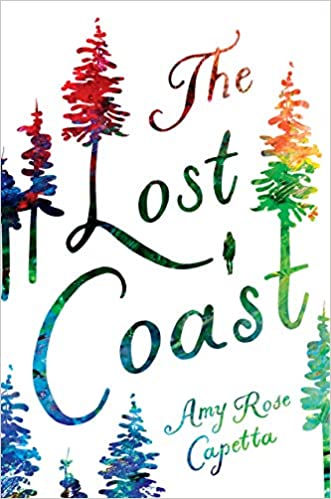
8. Felix Ever After by Kacen Callender
9. What Makes You Beautiful by Bridget Liang
10. Quiver by Julia Watts

by Rebecca | Jul 20, 2021 | Booklists, Parents
Derrick Barnes wrote I Am Every Good Thing to celebrate the experiences of black boys. The imagery captivates a brown boy’s experiences of skating, swimming, and growing into a future leader. Barnes stated, “I wrote this book for Black boys and the people that love them all over the globe.” His storybook amplifies this message and positively shows them.
The hashtag #BrownBoyJoy is trending for the reason that Black boys should have more positive images seen in their lives. A parent from The Bump said, “The hashtag is not a put-down of anyone else’s joy. The more joy the better! #BlackBoyJoy was created to show positive images of happy Black boys to reinforce confidence, release some of the emotional baggage and reaffirm the existence of and right for Black boys to be happy. #BlackBoyJoy helps to debunk the stereotypes that some people hold and the media sometimes portrays about who Black boys and men are—a menacing threat.”
Below is a small booklist that was inspired by Derrick Barnes’ book, I Am Good Everything. You can find more books about Black Joy Here from The Brown Bookshelf.
1. I am Every Good thing by Derrick Barnes
Experiences that celebrate the joy and love that black boys bring. A book demonstrating the strength, the humanity, and the experiences of who he is.
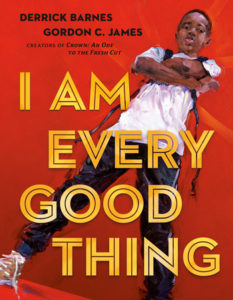
2. Black Boy Joy,Edited by Kwame Alexander
Celebrated authors provide experiences of Black boys.
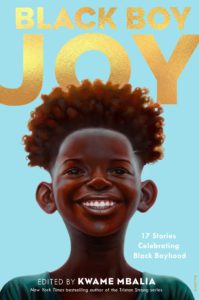
3. Chocolate Me by Taye Diggs
A young boy deals with name-calling because of his chocolate skin color. In the end, he learns to accept the way that he looks.
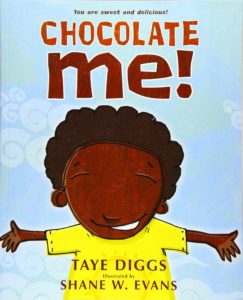
4. Crown an Ode to the Fresh Cut by Derrick Barnes
Celebrates the experiences of what it means to get a “Fresh Cut” in the barbershop. Barnes’ rhythmic language keeps the story flowing, and makes the reader understand what it truly means to get a haircut at a Black barbershop. Barnes even builds your imagination about the different characters in the shop and what they can be. This story opens the reader into another world and celebrates #Brownboyjoy.
Listen to the story here
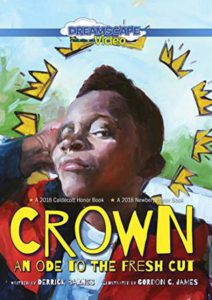
5. A Place Inside of Me By Zetta Elliott
A poem that narrates a young person’s emotions and experiences on what occurs in the real world. He feels hope, anger, sorry, joy, and much more. But through the challenges that he faces as a black man, he is proud of who he is.
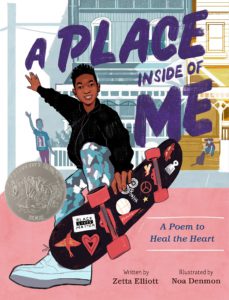
6. Be Boy Buzz By bell hooks
bell hooks share the different things that boys can do. The simplicity in the illustrations demonstrates the different actions that boys do. She uses jazzy language.
7. Brown Boy Joy by Thomishia Booker
A book for pre-k-kindergarten readers. Brown Boy Joy celebrates a young boy’s life, provides positive affirmations, and about what it means from the lived experience.
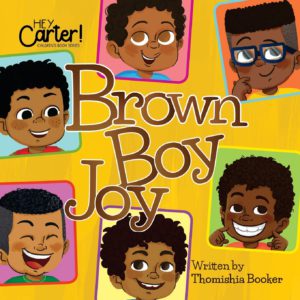
8. A Boy Like You, by Frank Murphy
A story celebrating the emotions and experiences. The book tells the reader that he can be or do anything in life.
9. Magnificent Homespun Brown: A Celebration By Samara Cole Doyon
A poem where a little girl sees the different shades of brown in tree branches, honey, sandcastles, and more. These different shades remind her about the brown skin that she is in.
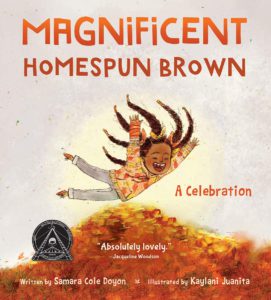
10. Little Legends: Exceptional Men in Black History by Vashti Harrison
A nonfiction book celebrating bold and courageous leaders, athletes, scientists, and musician. Ms. Vashti Harrison illustrates the characters similarly but their clothes and background represent their differences.
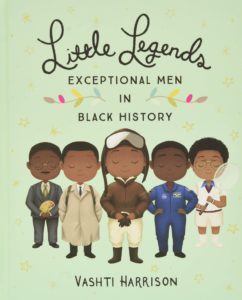
11. Your Name is a Song by Jamilah Thompkins-Bigelow
A little girl who attends an American school does not feel comfortable when others have to say her name. Her name is Kora-Jalimuso (KO-rah-DJAA-lee MOO-so). Her mother tells her the beauty of her name. Her mother shows her how her name fits into the rhymes and beats in a song. Kora-Jalimuso returns to school and sings her name making all of the children laugh and sing along.
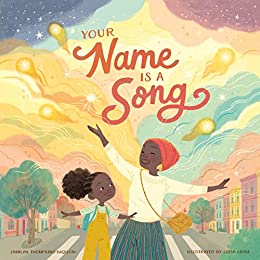
12. A Girl Like Me By Angela Johnson
A story and collage celebrating the aspirations these girls proclaim. View their experiences, joy, and ideas of standing up and shining.
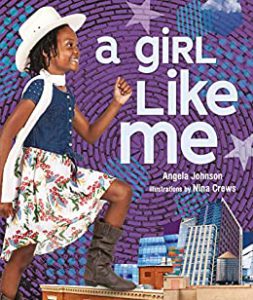
13. The Night Is Yours by Abdul-Razak Zachariah
Join Amani on an evening where she plays hide-and-seek with her friends. The moon keeps her company which shines bright at night. Amani’s name means wishes, and on this night she has the luck of winning hide-and-seek. A story about the joys of being a child, celebrating the shades of brown in the night sky, and the goodness that a child has.
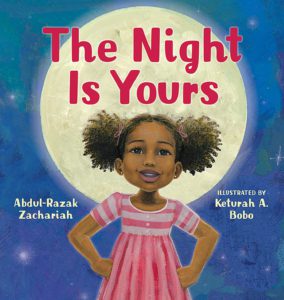
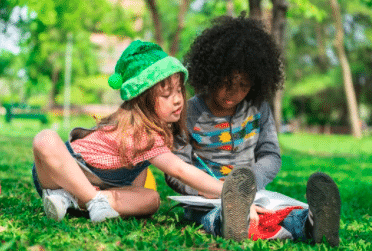
by Rebecca | Jul 14, 2021 | Booklists, Parents
-
Books about Earth & Climate Change Books for Kids
-
Nature Books for Children
Enjoy these picture books about nature that your child might love to read. These books range from riddles, fiction nature books, and non-fiction books. With broader topics about healing the earth and climate change, these books can bring conversations about protecting our Earth.
A New Green Day by Antoinette Portis
Nature is described in this book of riddles. Discover the voice of a snail, the sunlight, my, lightning, and so many more wonder that our world has. I’m a chorus of a million tiny voices. Come splash in my song, says rain. You will have fun guessing the riddle as you read this colorful book.

The Very Last Leaf by Stef Wade
A leaf learns that he spins the summer learning about his life period of then when fall comes he learns that he must fall to the ground just like his answer. Even though this small leaf is a great student and loves who he is he is terrified to fall. We learn what it means and why leaves must fall each year through the eyes of a leaf.
Honeybee by Candace Fleming
The Busy Life of Apis Mellifera
Learn how the honeybee grows from larva, to worker bee, and then passing on. The illustrator takes us inside the beehive where the queen lays 2,000 eggs per day. We follow the life of one bee named scientifically Apis. Once Apis emerges from her cell we learn how busy her life is-tending eggs, cleaning, caring for the queen, building the hive, and even protecting this. She must do all this work well before she searches for flower nectar.
Heal the Earth by Julian Lennon
Children are on an adventure exploring every continent. They learn how to protect the ocean. They learn about rainforests. They also learn how to make cities greener. With these children learn how caring for them is a fun.
Rubies Birds by Mya Thompson
Ruby is a happy little girl. She spends her time doing great things. But she loves visiting Central Park to watch all of the unique birds. She also joyously takes her family to the park to see another bird that she loves to hear.
Over and Under the Rain Forest by Kate Messner
Walk into the rain forest with a little girl and her Uncle as they view the wonders of a hidden. Sometimes, a lizard scrambles across the water. Other times, new songs filled the air as nighttime falls.
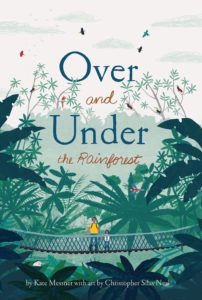
Over and Under the Pond by Kate Messner
Discover the world of life in a pond. Herbivores take their time to find Decadent plants to eat. Carnivores stealthily wait in till they find the best animal to grab and eat. In the story, a little boy and his mother Canoe in the pine sing all the wonderful life that exists in this ecosystem.
Rocket Cleans Up! By Nathan Bryon
Rocket is a tenacious little girl who will do anything to solve a problem. When she visits the beach at her grandparent’s house she discovers a lot of trash lying around and endangering the animals. Luckily, Rocket does what any young child would do and clean up the beach.
The Tree in Me by Corina Luyken
A story for young readers that shows how nature is a part of all this. The Tree and Me demonstrate how the Sun shines through And Us. How the tree protects us. How we can use fruits and nuts to nourish our bodies.
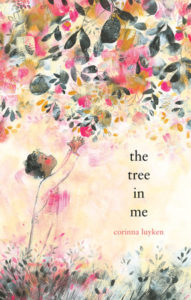
We Are Water Protectors
By Carole Lindstrom
Native people discuss the dangers of hurting our water system, how they have protected it, and what to do to make a change.
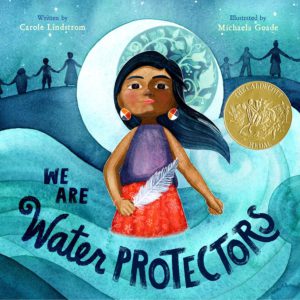
Climate Change and How We’ll Fix It by Alice Harman
This book is for children ages 7 and up. Explains the problems of climate change with graphics and powerful messages.
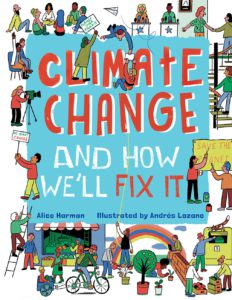

by Rebecca | Jun 13, 2021 | Booklists, Educators, Parents
-
Booklist: Books about the Juneteenth holiday and what it means for African American communities.
-
Juneteenth is a holiday to celebrate the end of enslavement. After enslavement was Reconstruction. After and during Reconstruction the Black Codes were established. A short history from Stony the Road.
Juneteenth is celebrated on June 19th each year in African American communities to celebrate when the Union army announced the freedom of slaves in 1865 in Galveston, Texas. However, two years before this announcement, Abraham Lincoln issued the Emancipation Proclamation in 1863 during the Civil War. This Proclamation gave slaves the freedom of enslavement. Still, other challenges arose from slaves becoming free. For example, the ideologies of white supremacy remained where Black Codes and then the Jim Crow Laws were established.
After the Civil War ended, Reconstruction took place to bring the Confederate states back into the Union while also giving African Americans freedom, citizenship, political rights, civil rights, and economic rights. In many ways, Reconstruction did not give Blacks the rights they expected. Other scholars say that it failed. 1
Despite the challenges from former slaveholders and society, African Americans continue to celebrate how far they have come and Juneteenth is one example. Below are Juneteenth books for children in grades Pre-K through 5th.
1. Juneteenth by RJ Bailey
A story for pre-K through kindergarten readers. Describes what this holiday means and what people do such as parades food and gatherings.
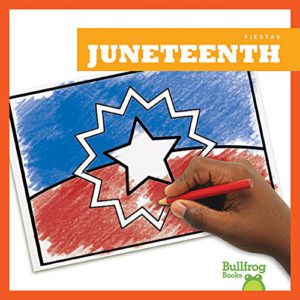
2. Juneteenth by Vaunda Micheaux Nelson and Drew Wilson
A detailed story for K-2 readers. This story describes how the last news was shared about the end of slavery in Galveston Texas. Even though the news was shared in 1865, during the Civil War Abraham Lincoln signed the Emancipation Proclamation in 1863. In the end, this
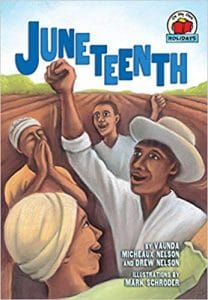
3. Juneteenth for Mazie by Floyd Cooper
Mazie’s father tells her how her grandfather was a former slave and heard the news in Galveston Texas. He then told her how black people struggled after they were freed but kept working for equal rights. He encourages his daughter to celebrate and to remember.

4. Let’s Celebrate Emancipation Day and Juneteenth by Barbara deRubertis
A nonfiction book for elementary readers discussing the reasons why Juneteenth even started which was due to the end of slavery. The author shares facts about pivotal abolitionists-such as Frederick Douglass. Later the author shares what life was like after the proclamation was given. Even though slavery is a dark part of our history Juneteenth celebrates freedom and about our ancestors as this book shares at the end.
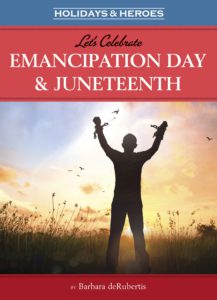
5. All Different Now By Angela Johnson Illustrated by EB Lewis
A story about a small enslaved child who witnessed her family becoming free. The illustrations captivate the narrative’s emotions. The writer writes in a poetic form to demonstrate the tremendous hope and joy that oppressed people heard about being free from enslavement.
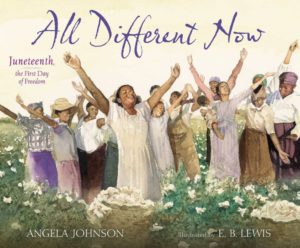
6. Freedom’s Gifts By Valerie Wesley
A Juneteenth Story
June lives in Texas in 1943. African American people living in the South were legally segregated from the white community. This year and June was going to celebrate Juneteenth with her family and her cousin Lillie who lived in the North. June enjoyed where she lived, but Lillie always complained. June didn’t say anything. Through the story, we learn about her Aunt Marshall who witnessed slavery. She didn’t enjoy discussing it but loved Juneteenth. This story brings generational experiences and historical experiences about what it means to be Black and free.
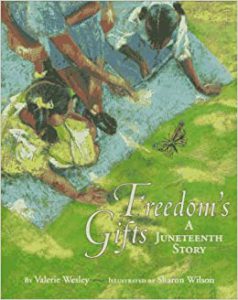
7. Come Juneteenth by Ann Rinaldi
A historical fiction novel for Elementary-aged readers. Luli lives in Texas but is raised by her Master’s family. She enjoys her family and is afraid of change. Once she discovers that slaves are free, she does not tell. Two years later, soldiers come to Texas and her world is changed forever.
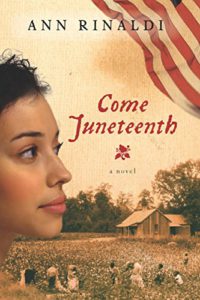
8. The Story of Juneteenth An Interactive History Adventure
By Steven Otfinoski
This reader for elementary-aged readers allows the reader to choose a different story paths and endings. The reader decides to follow the story of a teenage girl, or a black man. Some endings have joy, others endings are faced due to racism. Not only does one learn about Juneteenth, but they learn what happens to African Americans once they are freed from slavery.
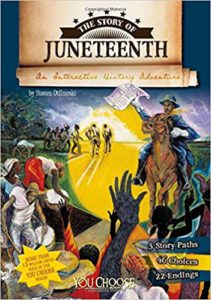
More details from Stony the Road provides dates and explanations on what happened after Black Americans were freed from enslavement.
- 1865-1877 is the Reconstruction era in the United States. Reconstruction ended in 1877, because of the 1877 Compromise. This Compromise gave Confederate Democratic states electoral votes in exchange for a withdraw of federal troops in the South.
- 1865 Mississippi and South Carolina were some of the first states enacting the Black Codes which restricted Black people from specific freedoms. Eventually, former Confederate states adopted the Black Codes.
- Post Civil War, the 13th, 14th, and 15th Amendments were ratified to end slavery, give Black men the right to vote, and recognize an individual’s citizenship if born in the United States.
There was also a larger question in the North and South was what to do with the Negro. The Cincinnati Enquirer stated, “Slavery is dead,” but “The negro is not, there is the misfortune.” We all know this was too true.
Quasi-Slavery or Quasi-Freedom
Former slaves were either migrating to the North to look for better jobs, and some remained working for a wage with their former Plantation owners. Henry Louis Gates calls this period “quasi-freedom or quasi-slavery: a state of being trapped in nether zone, between a state of being and nothingness, painted as unworthy of citizenship rights granted prematurely by contemporaries eager to justify the implementation of neo-slavery.” 1
One area of importance is that the celebration of enslavement ended, the need for cotton increased from 1860-1890, and doubled in 1920. Cotton was considered “King” because it made plantation owners wealthy and grew their capital. Once slavery ended Blacks were converted into sharecroppers.
Sharecropping is defined as a category of farming where owners rented parts of their land to families. Whenever families grew a portion of their crops of part of their crops were given to the landowner. In essence, this became an economic deficit because families owed the landowners money if they were not able to produce the number of funds to cover their crops.
The sentiment of being freed was an event that altered the lives of millions of African Americans. 1 Frederick Douglass spoke, “At last, at last the black man has a future. Heretofore all was dark, mysterious, chaotic. We were chained to all the utterable horrors of never ending fixedness. Others might improve and make progress, but for us, there was nothing but the unending monotony of stagnation, for moral, mental and social death. Today we are free American citizens. We have ourselves, we have a country, and we have a future in common with other men.
More Booklists Here
1 Gates, H. L. (2019). Stony the Road. Penguin Press.




